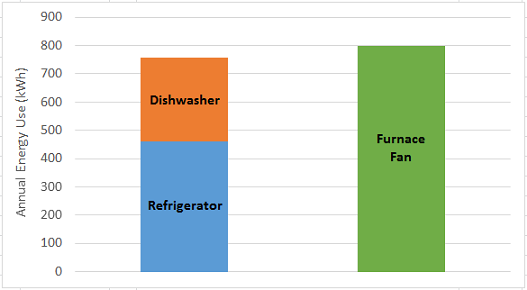The U.S. Department of Energy (DOE) proposed strong new energy efficiency standards that would address a major energy hog that may be lurking in your basement. The new standards would reduce the energy consumption of furnace fans, which are the fans that circulate heated and cooled air supplied by furnaces, air conditioners, and heat pumps through ductwork in homes. Improved furnace fan efficiency would not only save consumers money on their electricity bills, but would also help improve comfort.
DOE e stimates that the standards would save an average consumer about $400 over the life of a furnace fan. On a national level, products meeting the standards over 30 years would net consumers $26 billion in savings.
stimates that the standards would save an average consumer about $400 over the life of a furnace fan. On a national level, products meeting the standards over 30 years would net consumers $26 billion in savings.
Furnace fans consume a significant amount of energy—about 800 kilowatt-hours per year on average for typical units, which is more than the annual energy use of a new refrigerator and dishwasher combined.

However, very large energy savings can be achieved by improving the efficiency of the motor used to drive the fan. Typical furnace fans today use permanent split capacitor (PSC) motors. The efficiency standards proposed by DOE could be met using a more efficient type of motor—a constant-torque brushless permanent magnet motor. The proposed standards would reduce furnace fan energy use by about 40%.
More efficient furnace fans could also help improve comfort. Furnace fans using PSC motors are often unable to provide sufficient airflow to achieve desired comfort levels throughout a home. Furnace fans often encounter significant resistance to airflow due to poor duct design or installation, restrictive filters, and other factors. As this resistance increases, the airflow that a furnace fan with a PSC motor can provide drops off significantly. Furnace fans using more efficient motors not only provide large energy savings, but can also improve comfort by doing a better job of providing sufficient airflow.
Vanquishing this and other energy hogs is also great news for the environment. With this new proposal for furnace fans, DOE is taking another important step to help meet President Obama’s goal of reducing carbon dioxide emissions by at least 3 billion metric tons cumulatively by 2030 through efficiency standards. DOE also issued new draft standards for metal halide lamp fixtures and two types of commercial refrigeration equipment within the past few weeks.
DOE must publish a final standard for furnace fans by December 31, 2013.





